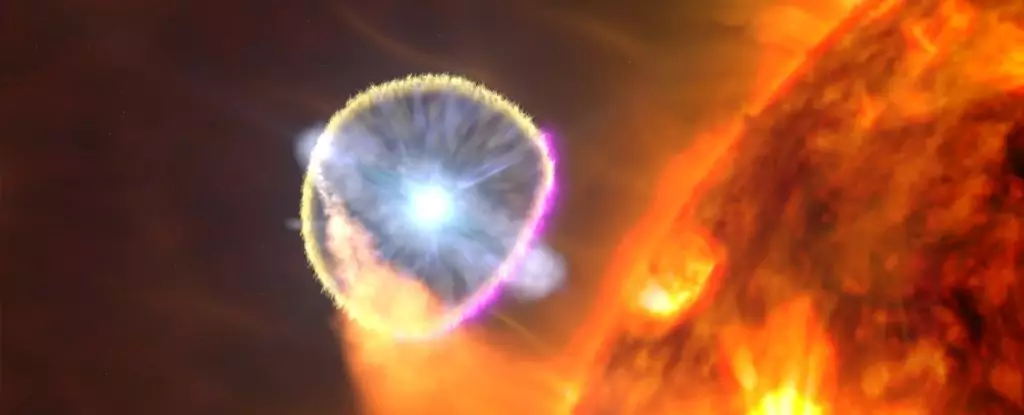In the vast expanse of the Corona Borealis constellation, approximately 2,500 light-years away, lies a star known as T Coronae Borealis. Astronomers are anxiously anticipating an explosion that will transform this star into one of the brightest objects visible in the night sky. The event is not only expected to be visually striking but also promises to provide valuable data on a specific type of star explosion known as a classical nova.
T Coronae Borealis, affectionately referred to as T CrB, is on the brink of a significant eruption due to its historical pattern of exploding once every 80 years, a cycle that has persisted for over eight centuries. This upcoming event is considered a once-in-a-lifetime opportunity, particularly because advancements in technology now allow for more detailed observation compared to the last eruption in February 1946. According to astronomer Rebekah Hounsell from NASA’s Goddard Space Flight Center, the proximity of T CrB’s explosion to our own solar system adds to the excitement of the impending celestial display.
Classical novae, such as the anticipated explosion of T CrB, involve smaller-scale eruptions that do not obliterate the star itself. Unlike the catastrophic destruction seen in supernovae, classical novae leave the star relatively intact after the event. The repetitive nature of T CrB’s explosions can be attributed to its composition as a binary star system consisting of a white dwarf – the collapsed core of a Sun-like star – and a red giant companion.
White dwarfs are characterized by their small size and high density, housing mass equivalent to 1.4 Suns within the space of Earth to the Moon. These gravitational properties, coupled with close binary companions, result in the accumulation of hydrogen from the companion star onto the white dwarf’s surface. Over time, the compressed hydrogen ignites in a thermonuclear explosion, expelling excess material into space and causing the phenomenon known as a nova. The 80-year cycle of eruptions observed in T CrB is a result of this intricate process.
Recent observations of T CrB have indicated behavior consistent with patterns preceding the 1946 explosion, including a dimming in brightness signaling an impending eruption. Astronomers suggest that the next explosion could occur as early as before September 2024, prompting vigilant monitoring of the constellation cluster encompassing Lyra, Hercules, and Boötes, with Corona Borealis at its center. The anticipated nova is expected to become visible to the naked eye before gradually fading over a week, providing ample opportunity for sky gazers to witness the event firsthand.
In light of the upcoming celestial event, citizen scientists are encouraged to contribute to data collection efforts alongside professional astronomers. The collaborative observation of T CrB will enhance our understanding of recurrent novae and provide valuable insights into the nature of these flashy outbursts. With an array of telescopes poised to capture the event across various wavelengths, from radio to gamma radiation, the scientific community is poised to unravel the mysteries of this unique astronomical phenomenon. Astrophysicist Koji Mukai emphasizes the unpredictable and intriguing nature of recurrent novae as scientists prepare for the spectacle that awaits in the night sky.


Leave a Reply